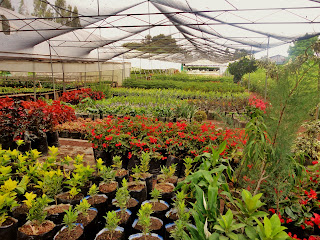We’ve mentioned before that our consumption of food in
Ethiopia has been very different from our normal diet. This starts off with the
most important element of Ethiopian cuisine, injera. Injera as described before
is like a giant pancake that is cooked on one side while the other side
resembles a sponge. It has a slightly acidic taste like sour dough and the
average Ethiopian eats injera about twice a day. Upon arriving in Ethiopia I
had been told I would eat a lot of injera but I don’t think I really understood
that it would become a staple in my diet. Now saying this I can tell you that I
have reached a point where I can identify good injera from bad injera or at
least my preferences. I had the chance the other day to try my hand at cooking
injera.
The job of cooking in Ethiopia still remains primarily in
the hands of the women, finding a male in this country who can cook is rare (at
least most can make pasta but thats like saying you can make Kraft Dinner at
home). I asked my friend Eleni from the Post Harvest class if she could show me
how injera is made. Mannfred and I
headed over to Eleni’s with a few of the other girls from the PHM class. First
I was shown how to perform the traditional Ethiopian coffee ceremony starting
from roasting the beans and using the traditional Jam^&*( to brew the
coffee. My coffee didn’t turn out half bad but with some help from Beza while
Manny and Misale ate popcorn and watched the magic happen. We also enjoyed a
wonderful lunch that Eleni made which really showed us how different a meal can
be when its homemade. We have primarily been eating our meals from restaurants
where the injera is made in large commercials batches while the meal we had at Eleni’s
was much tastier and the injera much softer. Its like comparing homemade rolls
to Ben’s bread.
After lunch, I got my first attempt at making injera. To
start injera is very basic with the main ingredients being water, tef flour and
yeast and then the mixture needs to sit and ferment for approximately three
days. On the third day, additional water is added to create a batter similar to
pancake batter. A large grill (the name I cannot remember because its Amharic)
is used for cooking the Injera. Eleni showed me the technique for pouring the
batter on the grill which didn’t seem too challenging until I tried it myself.
Like the young girls I was given the last bucket of mix and tried to pour my
circle of injera, it proved to be very tricky where you need to pour quickly in
a perfect circle. You don’t want it too thick in places because then it won’t
bubble properly but you also don’t want holes in your injera which is exactly
what happened to mine. Mannfred’s comment about my holey injera was that “its
only good enough for firfir” which is a common dinner time item of broke pieces
of injera and lots of spices. I’ll be making my second attempt at making Injera
in the coming days and hopefully it will turn out slightly better. At least for
now I have a good line for the guys that I would make a terrible wife because
my injera is bad.
Thats all for now.
Suze
Coffee Ceremony with some help from Beza
My roasted beans
My injera with lots of holes in it.
Manny and some konjo (beautiful) girls



















